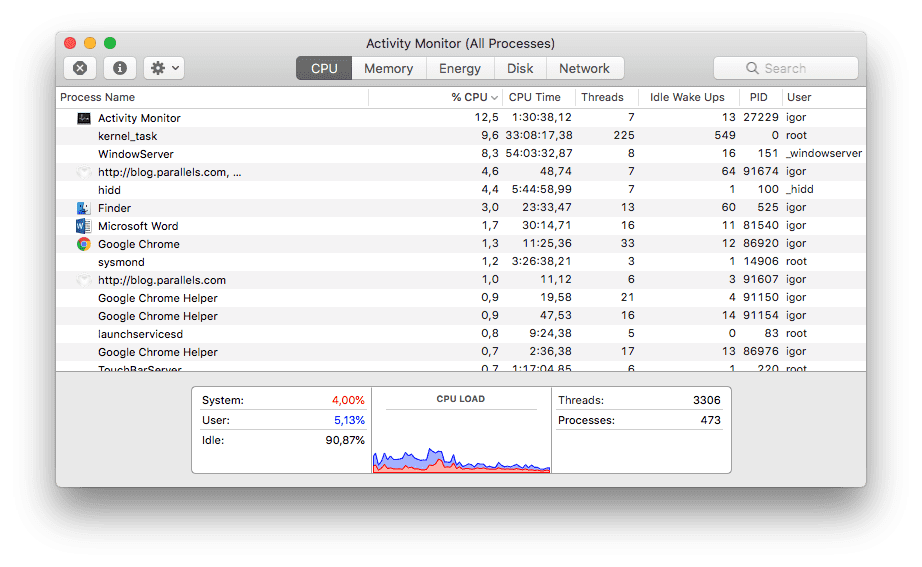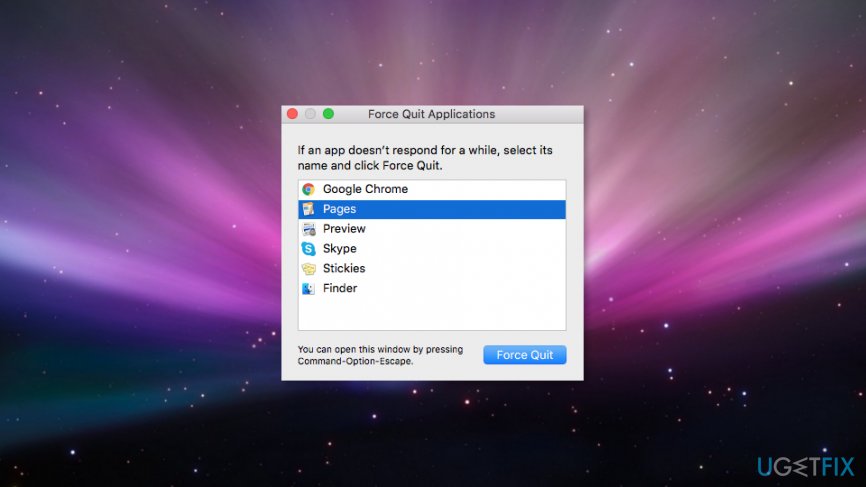
You can modify them-for instance, to disable them or to change how often they run-but before you do, you should understand a few things about how they work.Īs for items in the folders it says you can modify, I'd reccomend just taking a backup in a folder named the file path and then deleting the ones in the 'LaunchAgents' and 'LaunchDaemons' folders.Īfter this, when opening activity monitor, no processes related to Hamachi are running. Find the app listed or search for it using the search bar in the upper-right corner.
#MAC FORCE QUIT FREE#
Modify others as you like: As for the items in the other folders, feel free to browse through them and see what’s there. Select the frozen application from the dialogue box and select Force Quit. It will immediately bring up a Force Quit Application window.
#MAC FORCE QUIT MAC#
Keep your hands off of some: Of those five folders, the two located in the /System folder (/System/Library/LaunchDaemons and /System/Library/LaunchAgents) are for components included as part of OS X, and you should resist the temptation to remove or alter them-they’re essential to keep your Mac running correctly. On your keyboard, press and hold Command + Option + Esc. Type the following command: killall application name (for example, if Spotify isnt responding.
#MAC FORCE QUIT HOW TO#
There are no hamachi files in the /System/.įiles It warns not to venture into these files as you may end up breaking something. How to force quit using the Terminal Open the Terminal. Items in /Users/your-username/Library/LaunchAgents load only when that particular user logs in, and run as that user.Īfter venturing to these folders you will find files named:Ĭom. in /Library/LaunchAgentsĬom. in /Library/LaunchDaemons Items in /Library/LaunchAgents and /System/Library/LaunchAgents load when any user logs in, and run as that user. Items in /Library/LaunchDaemons and /System/Library/LaunchDaemons load when your Mac starts up, and run as the root user. plist files that launchd uses can occupy any of five folders, and their location determines when the items load and with what privileges: This means there are other mechanisms for launching processes. There are a few quick steps to force quit an application without waiting for the rainbow. Applications on your Mac will occasionally stop responding and lock up if your computer is overburdened. This approach provides more flexibility than either login items or startup items, but it is less transparent to users. The force quit feature on Mac is an easy way to shut down troublesome applications in just a few steps. It wont let me shut down my laptop whilst safari is still open. In the dropdown menu that appears, hit 'Force Quit.' Select. Click on the Apple logo at the top left corner of the screen. A new window wont open and it wont force quit or close using optn+cmd+esc. How to force quit on a Mac through the Apple menu 1. OS X 10.4 Tiger, Apple has given developers another mechanism for launching items automatically: launch daemons and agents, controlled by the launchd process. Safari wont force quit I Have a new MacBook and the safari application is not responding. These are easily visible however there are other processes that aren't applications that start up behind the scenes. Method 4: Force Quit Using the Dock Step 1: Locate the unresponsive app on the dock. open-force-quit-window-on-mac Step 2Next, Force Quit. Select the frozen app in the Force Quit Applications window and. These are shown as the login items in the System Preferences -> Users & Groups -> Login items. Method 1: Get all running Apps to Force Quit App on Mac Step 1Go to the Apple iconin the top right corner of the screen. Here are the steps to force quit a frozen app using the keyboard shortcut: Press the Command+Option+Esc key combination. It will show you the list of processes currently running, select the application from list and click the cross button located at the top left corner of activity monitor window, select Force Quit.Upon login, many applications startup. To open Activity Monitor, Open Finder ❯ Applications ❯ Utilities ❯ Activity Monitor Well, Activity Monitor can be considered as ctrl + alt + delete alternative for Mac.
#MAC FORCE QUIT WINDOWS#
If you have used windows then you are probably aware of the ctrl + alt + delete key combination that opens up the task manager from which you can easily force quit an application. Press and hold Option key and right click on the application icon in the dock, select Force Quit. You can force quit the application from the dock itself. Alternately, press Command-Option-Escape on your keyboard. In this window you can see the currently running applications, to force quit an application, select the application from list and press Force Quit. How to force quit apps in macOS Click the Apple logo in the menu, then select Force Quit.


Press Command + Option + Esc to open Force quit window. Here are the three ways to force quit an application. There are times when an app doesn’t respond and you are left with only one option i.e.


 0 kommentar(er)
0 kommentar(er)
